Huthwaite War Memorial
Local Defence Volunteers
Deploying British troops into France to repel the Nazi German enemy faced an overwhelming strong force. Several months in and strategically surrounded, they began a desperate retreat from Dunkirk back across the English channel.  World War Two suddenly added greater threat of an impending invasion next taking the British Isles.
World War Two suddenly added greater threat of an impending invasion next taking the British Isles.
Precautionary measures involved more children being evacuated inland away from coastal areas. A Southend-on-Sea primary school was near one potential landing site, remembered by youngsters relocated to Huthwaite. In time, evacuees were shipped abroad.
Need to strengthen coastal defences would outstretch existing armed forces needed elsewhere. Winston Churchill recognised how fitness demanded for all military service dismissed a huge number of keen middle aged volunteers, including experienced WWI veterans. Many held reserved occupations, but he believed if offered a part time unpaid defensive role there might be good chance of readily raising upward 150,000 men willing and able to greatly assist defending the worried coastal Home Front.
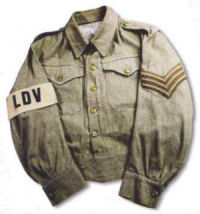
The Secretary of State for War actually announced this idea by radio using the new BBC Home Service 14 May 1940. Anthony Eden requested loyal volunteers willing to freely offer time filling newer roles helping keep their country safe. The government must have been surprised and somewhat unprepared by such immediate and massive public response.
Numbers rapidly climbed to nearer 1,500,000 within the first six weeks alone. Beyond June the total number of 17 to 65 year old men would total about 1.7 million. Improvisation of the scheme had been quickly required to make best use of a nationwide part time army called Local Defence Volunteers.
Local Defence Volunteers were initially just issued LDV armbands. Forming platoons and battalions across most of the country would later recognise free combat kit uniforms. Wooden replica guns mainly sufficed for practice. The war time Prime Minister Churchill did however, assure all would be given a range of tactical military training suiting their purposeful roles. And he also renamed the LDV on 4th July, into a more inspirational titled Home Guard.
Although dubbed by age and so very wittily characterised by a Dad's Army TV series, broadened opportunity allowed others a chance of at least feeling they could play some significant official role, even if it only kept up morale.
Huthwaite Home Guard
Huthwaite therefore became a training ground for two similar looking trainee soldier forces. They separately marched to perform military exercises and square bashing discipline upon the open market place. Both trained using wooden or makeshift weapons, their ranking indistinguishable by carefree youngsters playfully following outdoor activities. Some children might recognise a relative or neighbour identifying Huthwaite Home Guard platoons from Sutton-in-Ashfield battalions. Difference otherwise appeared when fully disciplined Sherwood Forester recruits were those who were finally issued a real Lee-Enfield rifle or Tommy gun.
Home Guard battalions here covering Nottinghamshire amongst other inland districts may not have been as well equipped as those in key coastal areas. although smaller rural localities could possibly be armed using privately owned shotguns.
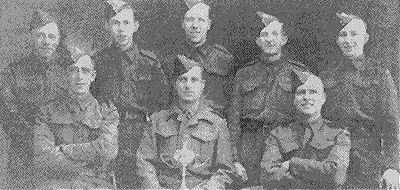 Robert Bailey - Les Scott - Ernest Clarke - Hedley Pickover-Hardy - Bill Morley
Robert Bailey - Les Scott - Ernest Clarke - Hedley Pickover-Hardy - Bill Morley Frank Remmington - Walter Thorpe (pit manager)- Arthur Caunt
Coal mining and hosiery manufacturing were the two big industries in Huthwaite, and along with farming, these were classified reserved occupations supporting the war efforts. Many chose enlistment into the armed forces. Some proudly added a uniformed part-time role.
Shooting practise was part of their defensive training, offering photos exposing main two competition winning Huthwaite Platoons. The colliery executive awarded his New Hucknall Colliery platoon their own Muschamp Cup.
The CWS factory presented far larger 1941 Home Guard partly named by Mr Nowell. As members of a Sutton-in-Ashfield battalion, their 1943 number 12 platoon might expose a few younger faces. Joining the local Home Guard from minimum age of 16 years, gave suitable training before meeting the required 17 years of age demanding army enlistment.
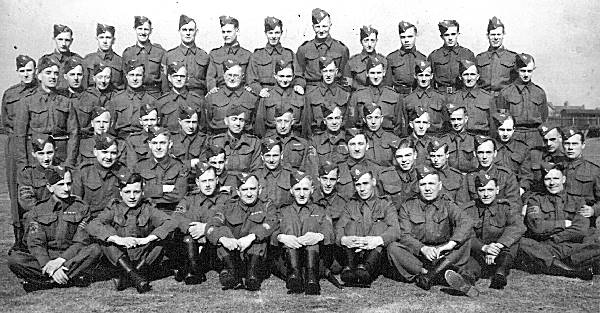 Barsby - Broughton - A Betts - ??? - R Lee - Holmes - E Dyment - G Smith - G Dykes - G Wingrove - ???
Barsby - Broughton - A Betts - ??? - R Lee - Holmes - E Dyment - G Smith - G Dykes - G Wingrove - ???R Pollard - B Clarke - ??? - Bacon - G Brailsford - F Moss - ??? - Taylor - ??? S Buxton - D Weston - ???
H Folwell - A Spencer - C Bird - A Dallison - ??? - G Davis - R Williams - H Lloyd - ??? - ??? - Herberts
E Heathcote - R Swannick - I Hibbert - J Wass - ??? - ??? - ??? - Hughes - ??? - R Holland - C Saunders
J Stendall - Barnard - ??? - Payne - J Bradley - A Blount - ??? - L Bowler - ??? - E Gadsby
Two photographs capture same 1943 Huthwaite platoon winning a battalion shooting match held on CWS factory sports ground. Board identifies numbered Battalion and Platoon suggesting unknown total size could have presented a significantly stronger local force. Members of the entire national Home Guard finally received instructions to "stand down" in December 1944.
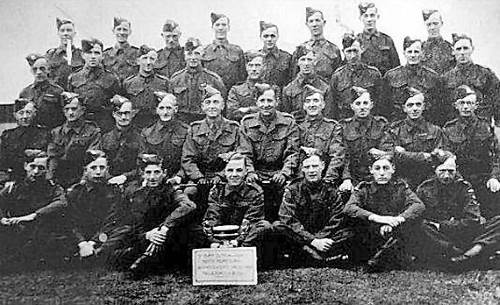
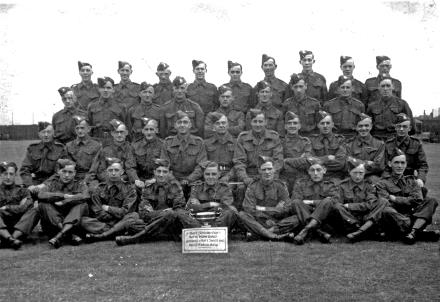 Names for some CWS employees includes :- G Bacon - A Betts - E Sanderson - A Dallison (officer)
Names for some CWS employees includes :- G Bacon - A Betts - E Sanderson - A Dallison (officer)G Briddon - ? Larkin - C Barsby - G Davis (CWS Manager) - C Leader - H Oscroft - W Boddicott - G Morris
J Bradley - A R Dallison - H Heath - R Pollard - B Clarke - C Kidger - H Oscroft - J Cobson - E Wilson
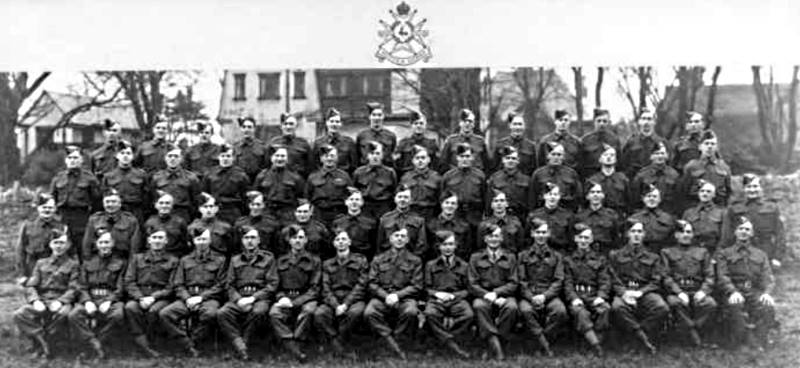
Nottinghamshire Home Guard, November 1944
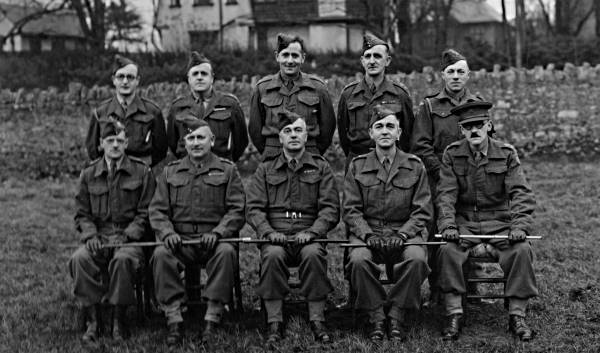 Lt. L. Else - Lt. W. Grant - 2/Lt. H. E. F. Heath - Lt. J. Tyler - 2/Lt. R. Bailey
Lt. L. Else - Lt. W. Grant - 2/Lt. H. E. F. Heath - Lt. J. Tyler - 2/Lt. R. BaileyLt. L. F. Gascoyne - Capt. G. W. Hall - Major G. Davis - Lt. A. R. Dallison - Lt. J. L. Hibbert
04 Aug 12 by Gary Elliott Updated 15 Mar 21
